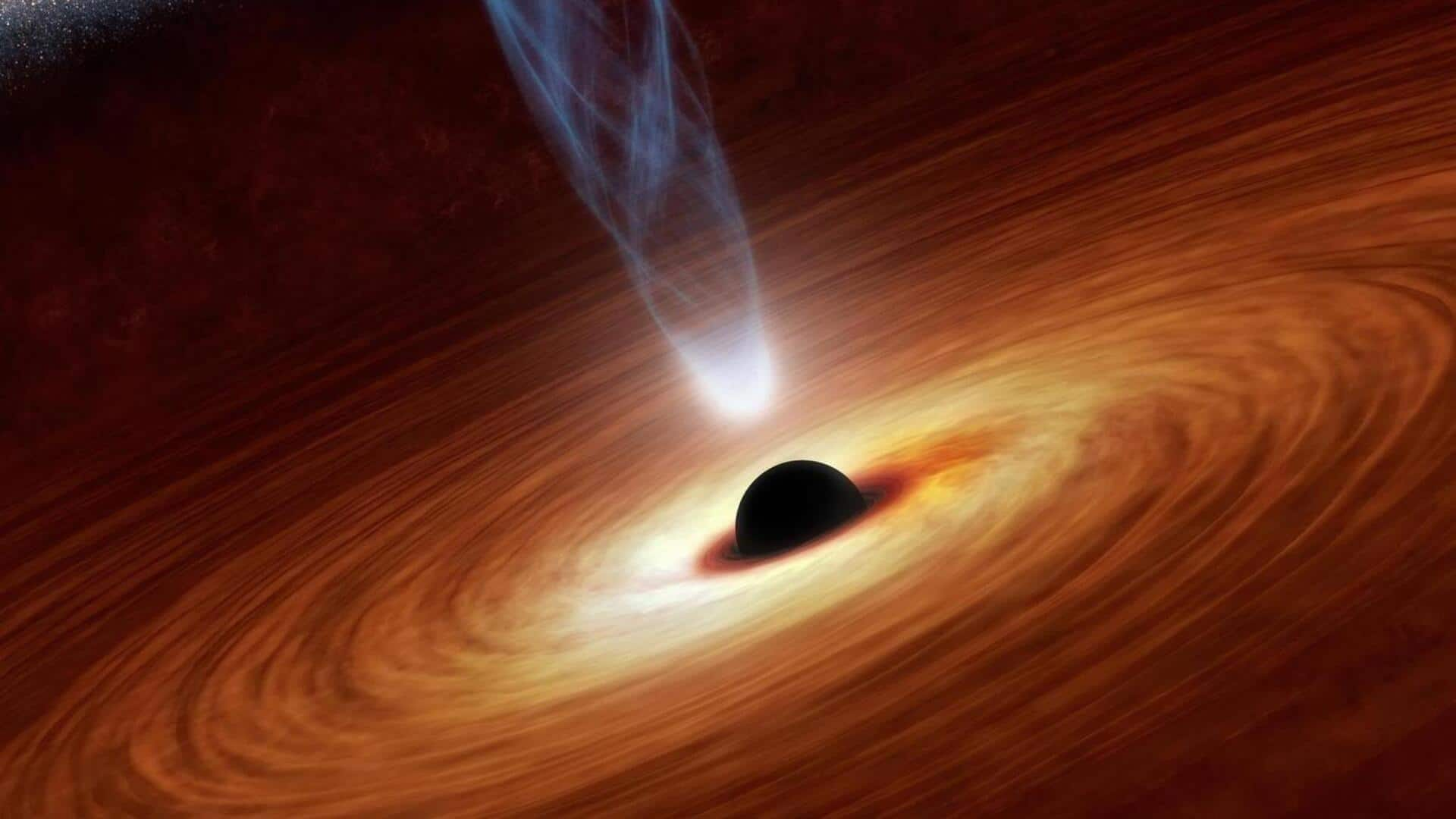
Scientists reveal how rotating black holes produce relativistic jets
What's the story
Theoretical physicists from Goethe University, Frankfurt have made a significant discovery about the formation of relativistic particle jets by rotating black holes. Their research involved advanced computer simulations to study plasma and electromagnetic fields around black holes. This has given us a better understanding of how these energetic jets are produced in the universe.
Simulation insights
The role of magnetic reconnection and plasmoids
The team's simulations confirmed that the Blandford-Znajek mechanism is a key player in jet formation. They also found that magnetic reconnection is crucial for energy conversion, breaking and reconnecting magnetic field lines to create plasma, heat, and radiation. This process produces plasmoids—small structures of charged plasma moving at nearly light speed—mainly in the black hole's equatorial plane.
Role of plasmoids
Plasmoids' role in relativistic jet formation
As energy is converted, heavily charged plasma moves close to the black hole's surface at nearly light speed, creating plasmoids. These structures were seen in the simulations' equatorial plane, highlighting their importance in forming relativistic jets. The jets accelerate particles to relativistic speeds, impacting galaxies and quasars while shaping cosmic evolution.
Astrophysics advancement
Implications for astrophysics and future research
The findings from this research improve current high-energy astrophysics models and our understanding of cosmic particle acceleration. This could lead to new insights within the astrophysics community. The FPIC simulations offer a detailed look at black hole jets and plasma behavior, which when combined with observations, will refine models and deepen our understanding of extreme cosmic conditions.